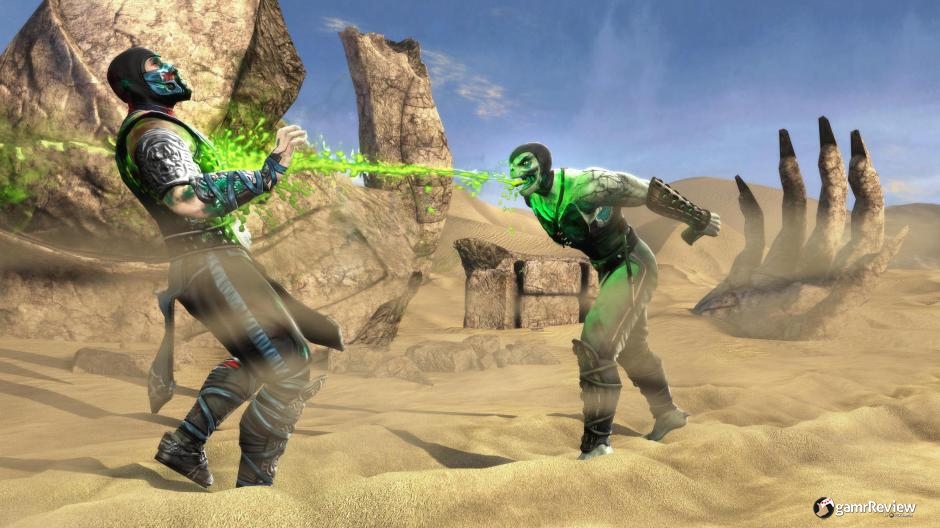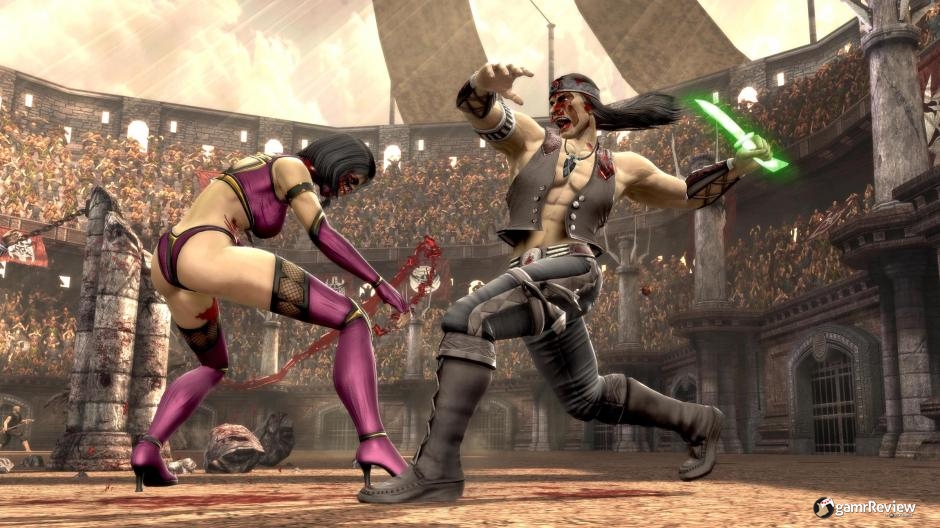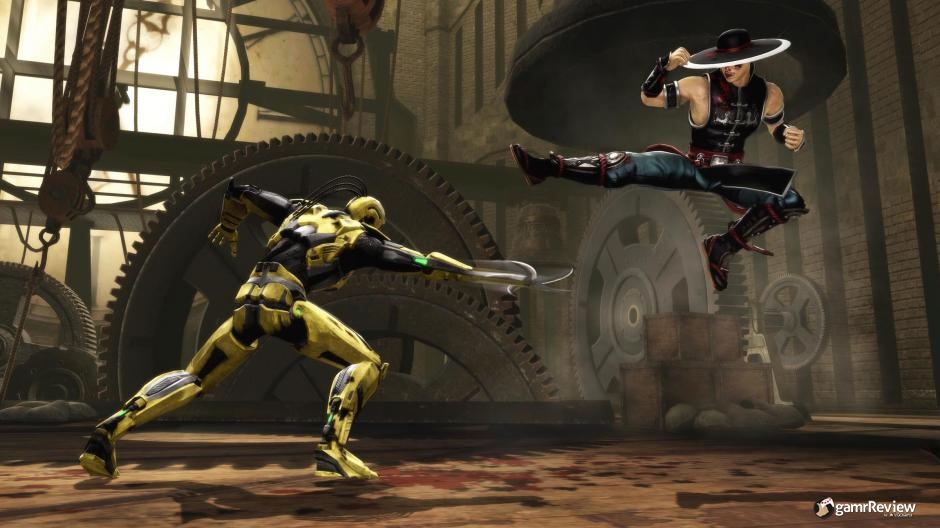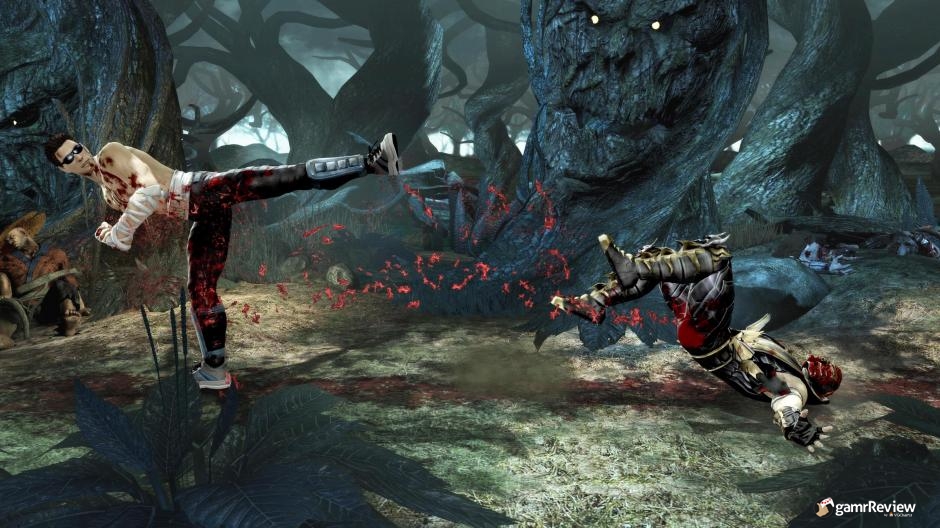Review: Mortal Kombat
There was a time when Mortal Kombat was synonymous with all things evil in the video games industry. Grown men and women would beat on each other. Demonic-looking monks and ninjas were fighting with sorcerers and Bruce Lee knock-offs. Blood gushed from every blow and you even had the option of brutally executing your opponent as a reward for beating him. Children snuck around to shadowy cabals of Mortal Kombat when Street Fighter just wasn’t enough.
Like Eminem, Marilyn Manson, and so many other controversial things, people eventually moved on from Mortal Kombat. After all, there were games like Grand Theft Auto andBulletstorm to get up in arms about. With that decline in controversy, Mortal Kombat has felt its own decline in popularity. For years, we’ve longed for a game that captured the same feeling the original two games captured all those years ago. Enter the latest installment in the franchise, simply called Mortal Kombat.
I must confess, I haven’t played a Mortal Kombat game in years. I used to sneak over to my buddy Russell’s house back in grade school to play the original Mortal Kombat and thenMortal Kombat II when it came out. I didn’t have a current-gen gaming console (Super Nintendo or SEGA Genesis) and my mom wouldn’t have allowed me to play those games anyway. Nevertheless, I logged many hours with Scorpion, Sub-Zero, and their ilk. I may have played a random match or three on some of the subsequent games, enough to know who Cyrax is. That’s about it.
I was pleasantly surprised how much of the original games I remembered and how well they translated to this newest installment of Mortal Kombat. I was spearing and freezing enemies just like it was 1992. That’s not to say this isn’t a brand new experience. While the back-front punch-kick button layout, infamous block button, and the almighty uppercut return from the olden days of Mortal Kombat, the complex combo system of later games returns here with some brand new tricks as well.

One very new and very game-changing feature introduced is the tag system. While tagging isn’t new to fighting games, it is new to Mortal Kombat. Nearly all modes of the game can be played solo or as a tag team. Tagging opens up combo extension and special attacks that do damage as your tag partner comes in. You can even compete in a tag match with a human partner, where you and a friend compete against a tag-team of CPU opponents while working your way up the ladder. This is all done quite well, adding new depth to an already robust game.
Mortal Kombat also introduces an energy bar. This energy bar is charged both by landing blows and receiving them. This energy can be used for several things. One segment (of potentially three) can be used to boost a super move. Two segments can be used to break a combo. A full energy bar can be used to activate the all-new X-Ray combo. The X-Ray combo does massive damage during a slow-motion cutscene in which you actually watch bones splintering, spleens freezing, or other such internal injuries occurring. All three have a dramatic effect on gameplay tactics and can swing a match this way or that very quickly.
I was most impressed with the dynamic differences in martial arts styles from character to character. You can really tell the Mortal Kombat team spent a lot of time researching various forms of martial arts to give different fighters and factions of fighters their own styles. All the characters fighting identically except for their super moves plagued early games in the series. This is no longer the case, with fighting styles dictating strategy just as much as super moves this time around.

Mortal Kombat is brimming with modes and features. You can progress up the ladder to get each character’s endings. This can be done solo, tag, or tagging with a friend. There’s also a lengthy story mode, the Krypt for buying unlockables, the 300-level challenge tower, training modes, practice mode, and online play. The online play offers ranked and unranked one-on-one or tag team matches. The unranked mode also offers King of the Hill mode, in which fighters congregate in a lobby where they can actually watch the fight occurring in real time. The winner of the match is the “king” and must defend his/her crown against all comers. Lose, and the winner of that match becomes the new “king.” I found the matchmaking to take a very long time and suffered lag on a regular basis. While some may think this is more due to the recent PSN outage than anything else, the Xbox 360 version experiences similar issues on a regular basis.
While Mortal Kombat has a lot of things in the awesome column, it has its warts too. The single player combat is often horribly unbalanced. Several fights in the story mode are two-on-one or even, late in the story, three-on-one. High-level bosses like Goro, Kintaro, and particularly Shao Khan break the rules of kombat and are impossibly cheap. Khan rarely staggers when hit and can throw a hammer that cannot be blocked and stuns you. In higher-level matches, he will hit you once with that hammer and just keep throwing it, leaving you helpless while your health bar is annihilated.
The story mode I mentioned earlier is cheesy to say the least. It goes chapter by chapter, retelling the stories of the first three Mortal Kombat tournaments as Raiden tries to change the past so Shao Khan doesn’t win the whole shebang. The story plays out like a bad kung-fu B-movie, but it runs between 5-8 hours to complete. While this story won’t hold up against storytelling juggernauts like Mass Effect or Uncharted, it is far and away the most in-depth story of any fighting game EVER. Most fighting games resort to corny non-sequitor intro and outro movies with a string of fights linking them together and call it a story. Mortal Kombat has in-engine cutscenes between each fight, explaining them each in detail. That said, you can never skip these cutscenes and there is no chapter select, which is very annoying.

Mortal Kombat is a big graphical step forward for the series. While several of the characters were rendered in HD for Mortal Kombat vs. DC Universe, this is the first HD rendering for a full MK cast. Classic Mortal Kombat arenas return here as well, albeit with updates like actively moving backgrounds and much more detail than ever before. However, everything looks just a bit too shiny at all times. This is an odd contrast from the older games that used captures of real people. This new Mortal Kombat almost looks like plastic action figures fighting until they get beaten and start bleeding. That speaks to one great graphical addition to Mortal Kombat: progressive damage. As the fight progresses, characters show damage to their costumes and bodies that progressively worsens as they keep catching fists with their faces.
Mortal Kombat is a brutal game. That brutality is never more present than in the sound design for the game. Anybody who’s ever been punched knows how much it sounds like a car crash occurring in your head when it happens. The sound effects for Mortal Kombat are just that visceral, powerful, and persistent. Just as satisfying as the sounds of bones crunching are the sounds of the various weapons and abilities in action. Kitana’s fans, Sub-Zero’s freeze, and Jax’s metal-arm punches ring true every time.
As I said earlier, Mortal Kombat presents a plethora of modes for a single player or friends wanting to get their bloody beatdown on. The game also boasts nearly 30 playable characters, each with their own unique fatalities, fighting styles, stages, unlockables, and ladder endings. The PS3 version also features Kratos, though the addition of one character to an already healthy roster isn’t enough to affect the value score. The Krypt has hundreds of unlockables to choose from such as concept art, costumes, extra fatalities, and even alternate play modes. Any fighting game also boasts immense replay value and Mortal Kombat is no exception.

Mortal Kombat seems to be trying to do what Street Fighter IV did for the Street Fighter franchise: bring a classic 2D fighting franchise back into relevance in the 3D, HD generation. At that purpose, it succeeds, though not quite so well as Street Fighter did. Nevertheless, this is the Mortal Kombat experience that both newer and old-school fans have been awaiting for a long time.
No comments:
Post a Comment